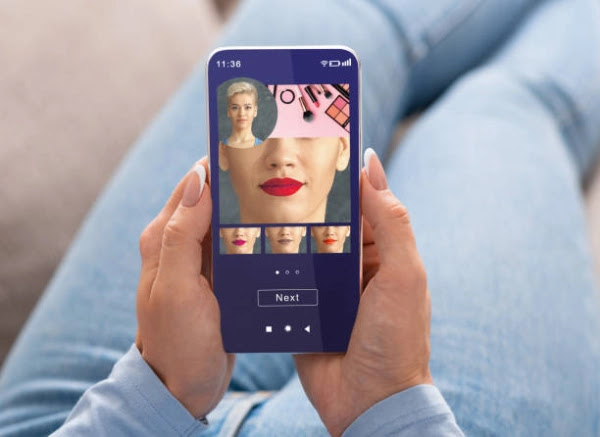Future of Lipstick
Innovations and Trends
Introduction:
Lipstick, a timeless cosmetic staple, continues to evolve
with innovations in formulation, technology, and consumer preferences. As the
beauty industry embraces sustainability, inclusivity, and technological
advancements, the future of lipstick holds exciting possibilities. In this
exploration, we delve into emerging innovations and trends shaping the future
of lipstick, from sustainable packaging to customizable formulations and
digital experiences.
Sustainable Formulations and Packaging:
In response to growing environmental concerns, the future of
lipstick is increasingly focused on sustainability. Beauty brands are exploring
eco-friendly alternatives to traditional lipstick formulations and packaging,
incorporating renewable ingredients, biodegradable materials, and refillable
packaging options.
One innovative approach is the development of plant-based
and biodegradable lipstick formulations that minimize environmental impact.
These formulations utilize natural ingredients such as plant waxes, oils, and
pigments derived from sustainable sources, reducing reliance on petroleum-based
ingredients and minimizing carbon footprint.
Additionally, brands are investing in recyclable and
compostable packaging solutions for lipstick products. From biodegradable paper
tubes to reusable metal cases and refillable lipstick cartridges, sustainable
packaging options offer consumers a more eco-conscious choice while reducing
plastic waste and environmental pollution.
Inclusive Shade Ranges and Customization:
The future of lipstick is inclusive, with brands expanding
their shade ranges to cater to diverse skin tones and preferences. Inclusivity
in lipstick extends beyond traditional notions of beauty, embracing a spectrum
of colors, finishes, and textures that celebrate individuality and diversity.
Beauty brands are investing in shade-matching technologies
and AI-driven algorithms to develop personalized lipstick shades tailored to
each consumer's unique skin tone and undertones. Customization options allow
consumers to create their own bespoke lipstick shades, empowering them to
express their individuality and find the perfect lip color for their complexion.
Moreover, inclusivity in lipstick extends to marketing
campaigns and brand messaging, with brands championing diversity,
representation, and self-expression. By featuring models of diverse
ethnicities, genders, and ages in advertising campaigns, beauty brands are
challenging beauty standards and promoting inclusivity and acceptance within
the industry.
Hybrid Formulas and Multi-Functional Products:
The future of lipstick is characterized by hybrid formulas
and multi-functional products that offer versatility and convenience. Beauty
brands are innovating with hybrid lipstick formulations that combine the
benefits of lip care, color, and treatment in a single product.
For example, lip oils infused with nourishing botanicals and
antioxidants provide hydration and conditioning benefits while imparting a
sheer wash of color. Similarly, tinted lip balms enriched with SPF protection
offer sun protection and moisture while adding a hint of color to the lips.
Furthermore, multi-functional lip products, such as lip and
cheek stains or lip and eye crayons, offer versatility and ease of use for
consumers seeking minimalist beauty solutions. These multi-tasking products
streamline beauty routines and cater to the growing demand for on-the-go makeup
options that deliver both convenience and performance.
Digital Experiences and Virtual Try-Ons:
The future of lipstick embraces digital innovation, with
beauty brands leveraging technology to enhance the consumer shopping experience
and provide personalized recommendations. Virtual try-on tools, augmented
reality (AR) filters, and AI-powered apps allow consumers to virtually try on
lipstick shades and experiment with different colors and finishes in real-time.
By integrating virtual try-on features into their websites
and mobile apps, beauty brands offer consumers a seamless and interactive
shopping experience that replicates the in-store try-on experience from the
comfort of their homes. These digital tools use facial recognition technology
to accurately map the user's lips and skin tone, enabling them to preview how
different lipstick shades will look on their lips before making a purchase.
Moreover, digital experiences extend beyond virtual try-ons
to include personalized beauty consultations, tutorials, and product
recommendations based on individual preferences and skin concerns. By
harnessing the power of data analytics and machine learning algorithms, beauty
brands can deliver tailored recommendations and personalized experiences that
resonate with consumers and foster brand loyalty.
Conclusion:
The future of lipstick is bright with innovation, sustainability,
and inclusivity at its core. From sustainable formulations and packaging to
inclusive shade ranges and customization options, lipstick brands are embracing
change and adapting to evolving consumer preferences and values.
As technology continues to advance, digital experiences and
virtual try-on tools will play an increasingly important role in shaping the
way consumers discover, shop for, and experience lipstick products. By
leveraging technology to enhance the shopping experience and provide personalized
recommendations, beauty brands can engage with consumers on a deeper level and
create meaningful connections that drive brand loyalty and advocacy.
Ultimately, the future of lipstick is rooted in innovation,
creativity, and self-expression, offering consumers endless possibilities to
express their individuality and embrace their unique beauty. As the beauty
industry continues to evolve, lipstick will remain a timeless symbol of
confidence, empowerment, and personal style for generations to come.
